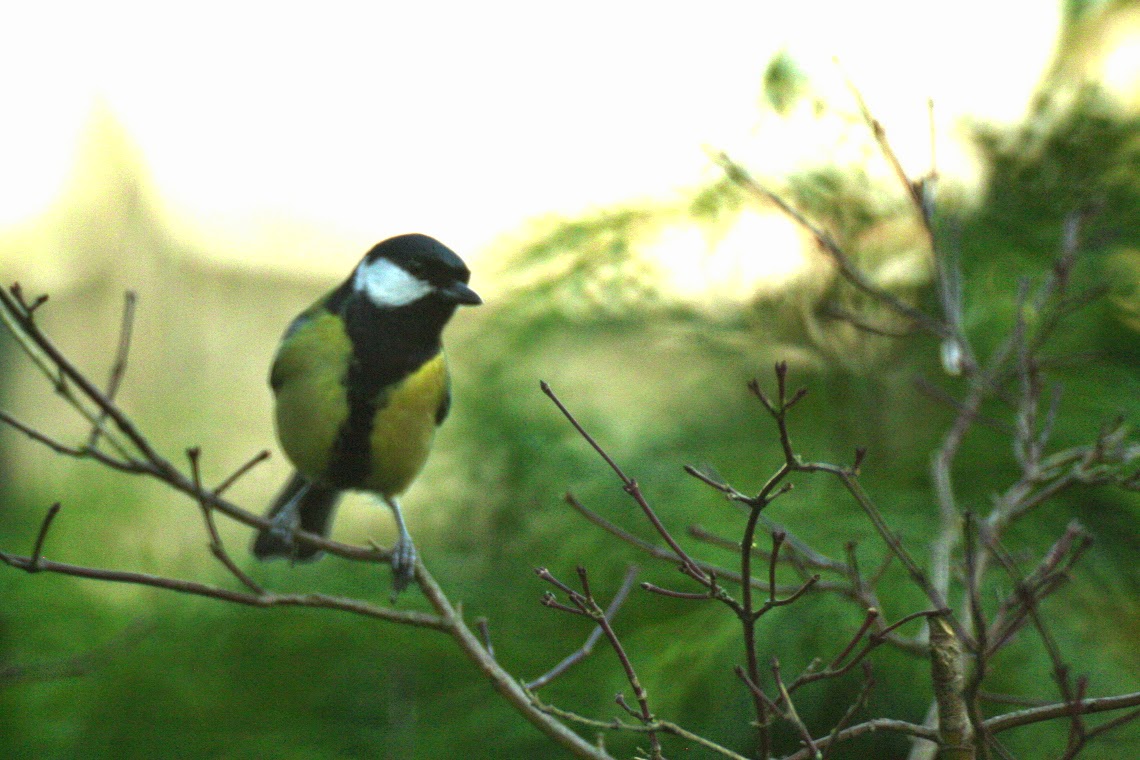 |
| Great Tit (Parus major) |
Anyway, here are the facts:
- They are a Green Status in the UK and they have around 2,500,000 breeding territories in the UK.
- They are found everywhere in the UK apart from all of the Scottish islands and Lough Neagh (try saying that backwards :-).
 |
| Looking for a feed? |
- They have a normal diet except for one thing which I will mention in the next fact. In the wild they usually eat insects, seeds and berries but in the garden they will eat sunflower hearts and that sort of thing as well as kitchen scraps which can be put out on bird tables.
- On the RSPB website there is a video that showed a Great Tit eating a tennis ball! I guess it was collecting this for nesting material.
- They are small birds being only 14cm long and only having a wingspan of 23cm. They also only weigh around 18g.
 |
| Singing tee-cher, tee-cher, tee-cher |
- Their main most distinctive call 'tee-cher tee-cher tee-cher' to their voice. This can easily be recognised by listening for them saying teacher.
- Even though I said they were small birds they are the largest of the tit family. This is another good way to remember that the great tit says teacher as the adults (the larger people) teach the children (the smaller people).
- In Winter you are likely to see a lot more great tits than any other tit as small groups of great tits join up with other small groups to create larger groups that can be aggressive to other birds of the tit family.
- Their size makes them dominant over other tit species and they often evict them from nesting spots or feeders.
- They are clever and adaptable birds able to change behaviour and learn new tasks if need be.
- Great Tits typically live for 3 years but the maximum recorded lifespan was almost 14 years!
- Scientists have studied Great Tits a lot and have discovered that the males with the widest black belly stripe make the best parents and are more attractive to females, at least in the country, in towns its the other way round! (thanks @__birdRS__)
Here are some links to some more information:
Hope you enjoyed,
Z.
No comments:
Post a Comment